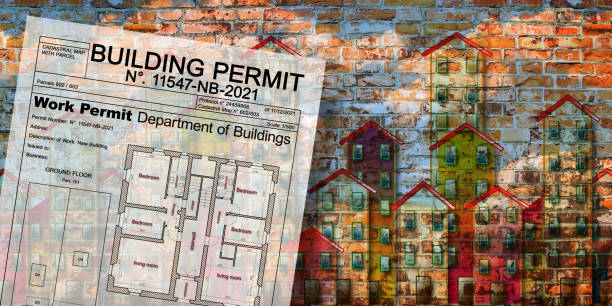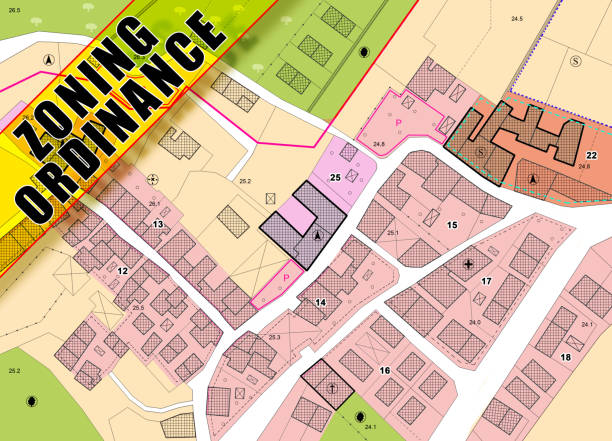Los Angeles Housing Battles: Why Development Stalls in a City That Needs Growth
Los Angeles is a city of contradictions. Drive through its neighborhoods and you’ll see shiny new towers rising next to crumbling apartments that should have been replaced decades ago. On one street, cranes dominate the skyline. On the next, families live in buildings with peeling paint, broken plumbing, and rents that keep climbing.
Table of Contents
ToggleThe paradox is clear. Los Angeles needs tens of thousands of new homes each year. Everyone agrees the shortage drives prices higher and pushes families out. Yet every time a developer tries to add supply, opposition erupts. Tenants fear eviction. Neighbors fear gentrification. Politicians hesitate. Lawyers get involved.
The result? Delay, lawsuits, and, too often, no project at all.
This tug-of-war has turned housing into Los Angeles’s most exhausting fight. It is not just about buildings. It is about who gets to live here, what kind of city this will be, and whether growth can ever align with fairness.
The Project Standoff
Consider a typical case. A developer purchases an aging apartment complex. The plan is to demolish the structure and build a modern mid-rise. The new building includes more units and a slice of affordable housing. On paper, this looks like progress.
But opposition grows fast. Long-term tenants organize. Local activists argue the project destroys community fabric. Elected officials hesitate. Legal appeals stall approvals. What began as a housing solution turns into a prolonged standoff.
The city ends up with no progress. The old building remains. The housing crisis deepens.

Tenants vs. Housing Supply
At the center of this fight is a tension between tenant protection and housing production.
Tenant advocates raise real concerns. Demolition often means families lose stable homes. Even with relocation assistance, many cannot return once rents rise. Affordable housing requirements rarely match the scale of loss. A 10% set-aside cannot replace 100% rent-controlled units.
Developers argue from another angle. Without new construction, supply never grows. Prices climb higher. Neighborhoods decline when aging buildings remain untouched. Restricting redevelopment preserves scarcity. That scarcity hurts tenants too, especially younger renters priced out of the market.
Both sides make valid points. Yet Los Angeles struggles to balance them.
A Policy Web That Contradicts Itself
The root problem lies in policy confusion. Los Angeles pushes for more housing under state mandates. Programs like the Housing Element and ED1 promise faster approvals. Incentive programs such as CHIP offer density bonuses.
At the same time, the city enforces strict protections for existing tenants. Rent stabilization laws shield thousands of units. Demolition control measures complicate redevelopment. CEQA challenges can delay projects for years.
The result is a system that says “build more housing” and “don’t touch existing housing” at the same time. Developers receive no clear path. Communities see policy contradictions and lose trust.
This web benefits no one.
Community Pushback Is About More Than Housing
It is easy to label opposition as NIMBYism. In reality, the resistance runs deeper. For many communities, new development signals cultural change. Residents worry about losing local character. They fear displacement of long-standing businesses. They see luxury towers rise while middle-class housing stays scarce.
For tenants, the fight is about survival. Moving once can mean moving out of Los Angeles forever. That anxiety fuels intense political action.
Ignoring these concerns only strengthens resistance. Developers must recognize this dynamic. Policy leaders must do the same.
The Affordable Housing Illusion
In many projects, affordability requirements become the flashpoint. Developers offer 5–10% of units at reduced rent. Policymakers present this as a win. Communities see it as a weak trade-off.
The math supports their frustration. If 200 units replace 50 rent-controlled apartments, but only 20 are affordable, the net loss is clear. Families priced out of their old homes cannot return.
This is why “affordable” has become a contested word. It does not match reality for most working families. Without deeper subsidies or stronger requirements, trust in the system erodes.
Developer Risks in Los Angeles
For developers, the stakes are high. Opposition brings lawsuits, delays, and cost overruns. Financing becomes harder when timelines stretch. Public relations damage can harm future projects.
Even well-designed projects that meet incentive program rules can collapse under pressure. The system leaves developers questioning whether Los Angeles is worth the risk. Many turn to suburban markets or other states.
When that happens, Los Angeles loses housing production capacity. The crisis worsens.
Lessons for Future Projects
What can developers learn? Several points stand out:
Engage communities early. Silence breeds opposition. Clear communication can reduce fear.
Plan for tenant impact. Offer relocation, right-of-return options, or stronger affordability.
Anticipate legal hurdles. Build in time and budget for CEQA and appeals.
Use incentive programs wisely. Density bonuses help but cannot replace community trust.
Tell the bigger story. Frame projects as solutions to housing scarcity, not just profit.
These steps cannot eliminate opposition. But they can reduce conflict and improve outcomes.
Where Planning and Policy Must Change
Developers alone cannot solve the problem. The city must create clearer pathways. Policy should balance protection with production. That means:
Preserving truly historic or vital rent-controlled housing.
Allowing targeted redevelopment where density makes sense.
Expanding subsidies for affordable housing beyond token percentages.
Streamlining entitlements to cut delays that kill projects.
Aligning city goals with state mandates to avoid contradictions.
Without reform, Los Angeles will remain paralyzed.
Opinion: The Real Fix
Los Angeles does not lack land or builders. It lacks clarity. The city must choose a consistent vision. Either it protects all existing housing and accepts limited growth, or it embraces redevelopment with stronger safeguards. Today, it tries to do both and fails at each.
Tenant protections matter. So does housing growth. Pretending one can succeed without the other is dishonest. What the city needs is not another layer of policy. It needs alignment, courage, and balance.
Developers should not be treated as enemies. Communities should not be dismissed as obstacles. Both must be part of a shared plan. If that plan does not emerge, the housing crisis will remain unsolved.
Conclusion
Los Angeles sits at a crossroads. Projects stall. Tenants fear displacement. Developers face roadblocks. Policymakers offer mixed promises. The housing crisis grows sharper by the year.
The city cannot afford to keep fighting the same battles. It must streamline policy, strengthen trust, and create realistic affordability. Only then will Los Angeles move from conflict to construction.
Until that happens, the paradox will remain: a city desperate for housing but unwilling to build it.
Los Angeles Housing Facts
Hover to reveal the shortage Los Angeles faces.
FAQs: Los Angeles Housing Battles
What are Los Angeles housing battles about?
They are conflicts between the urgent need for new housing and the push to protect existing tenants. Developers want to build more homes. Communities worry about gentrification, displacement, and rising costs. Policymakers struggle to balance both sides, creating delays and uncertainty.
Why do housing projects in Los Angeles often face delays?
Projects stall because of:
Tenant protection rules
Zoning and entitlement complexity
CEQA lawsuits and appeals
Political hesitation from elected officials
Each layer adds time and cost, making it harder for projects to move forward.
How does tenant protection affect new development?
Tenant protections help families stay in affordable housing. But they also restrict redevelopment of older buildings. When developers face demolition bans or high relocation costs, many projects become financially impossible. This keeps old housing stock in place but limits new supply.
What role does affordable housing play in these disputes?
Developers often set aside 5–10% of new units as affordable. While helpful, it rarely replaces the loss of rent-controlled apartments. For communities, this feels like a net loss. For developers, it is a minimum requirement to make projects viable.
Why do communities resist new housing?
Opposition is not always about rejecting growth. Many communities fear cultural change, loss of local businesses, and rising rents. For tenants, redevelopment can mean permanent displacement. These fears fuel organized pushback, lawsuits, and political action.
How do city policies create contradictions?
The city promotes growth with housing mandates and incentive programs. At the same time, it enforces strong tenant protections and demolition controls. Developers hear “build more housing” and “don’t replace old housing” at once. This contradiction breeds conflict and delays.
What risks do developers face in Los Angeles?
Developers face lawsuits, long approval timelines, financing challenges, and reputational harm. Even projects that follow zoning rules and incentive programs may collapse under community pushback. Many developers turn to other cities with clearer rules.
What solutions could ease Los Angeles housing battles?
Clearer housing policy with less contradiction
Stronger subsidies for affordable housing
Streamlined entitlement and permit processes
Community engagement early in planning
Balance between tenant protections and new construction
These steps would help both developers and residents.
Error: Contact form not found.






